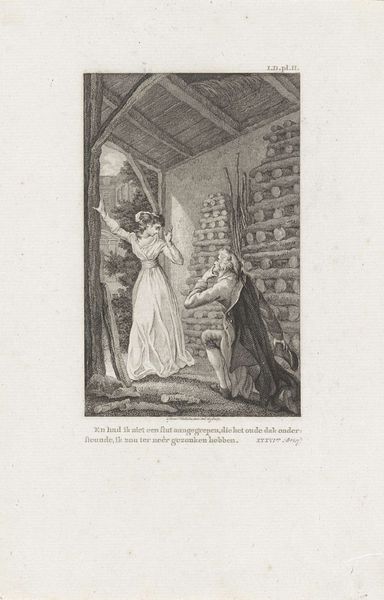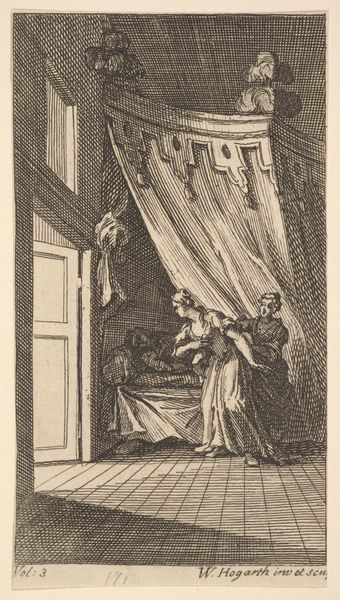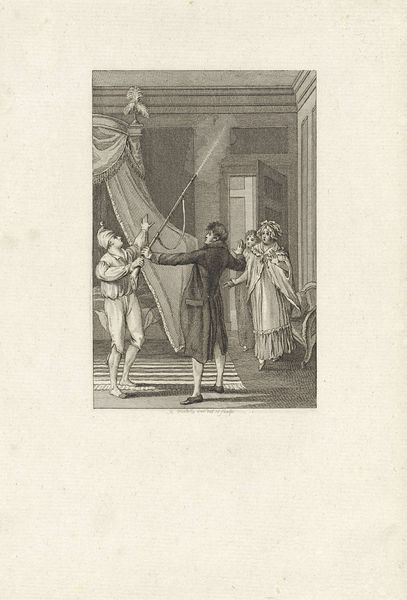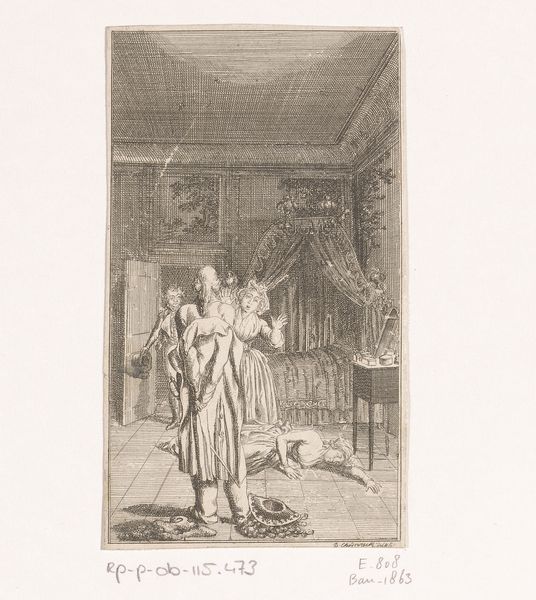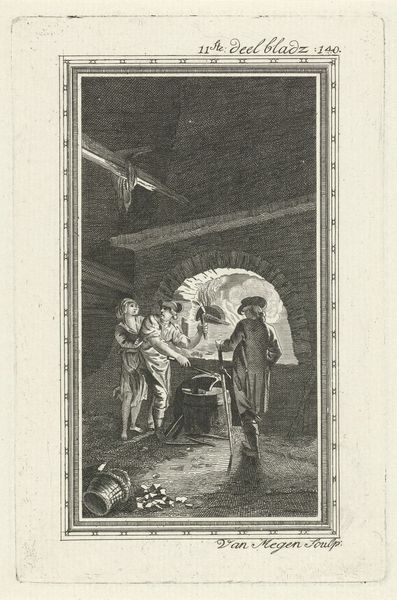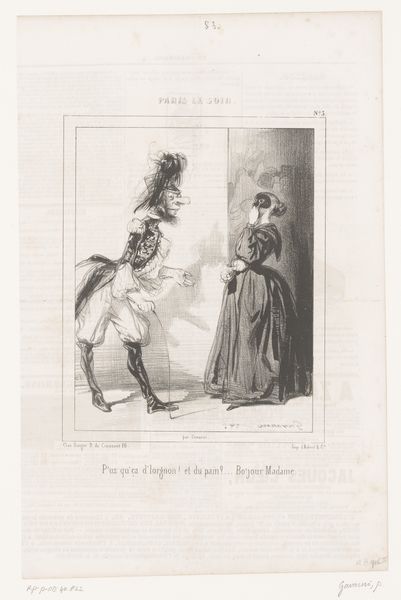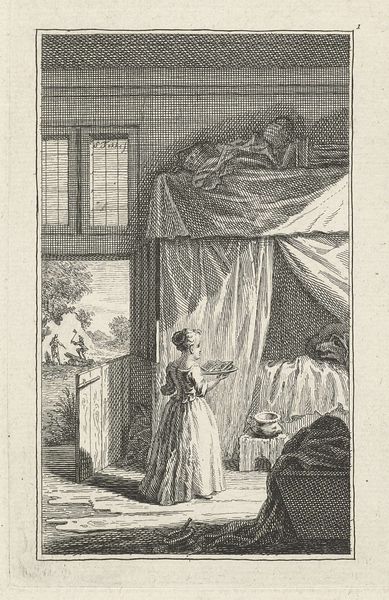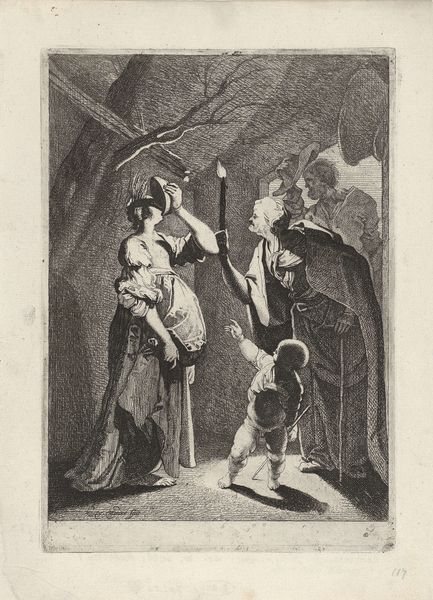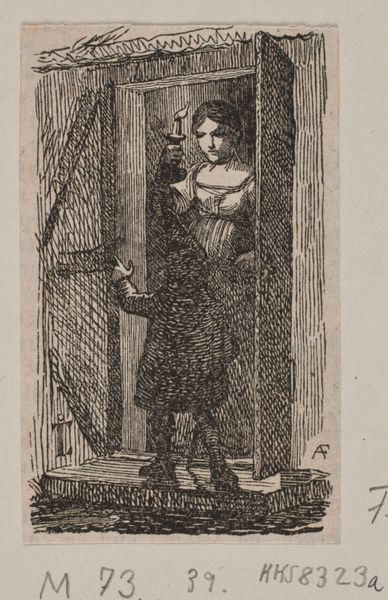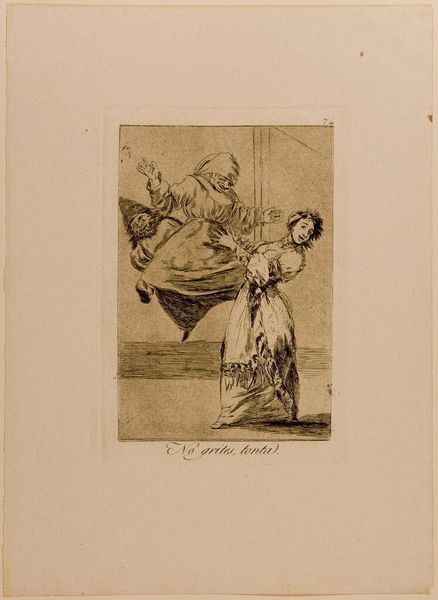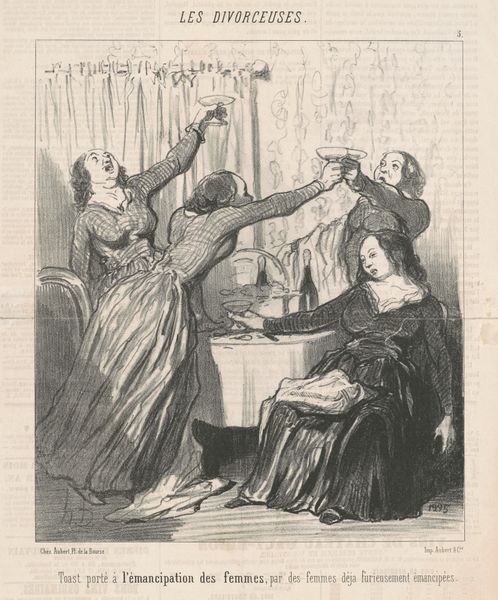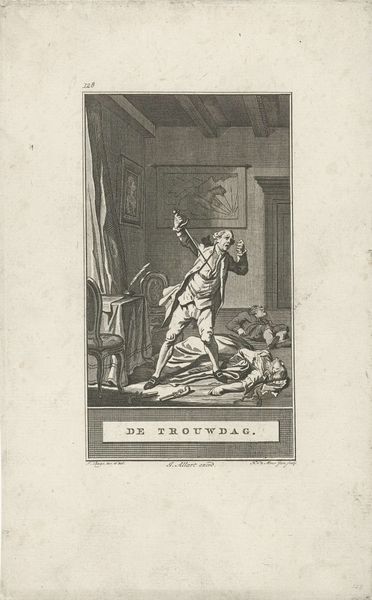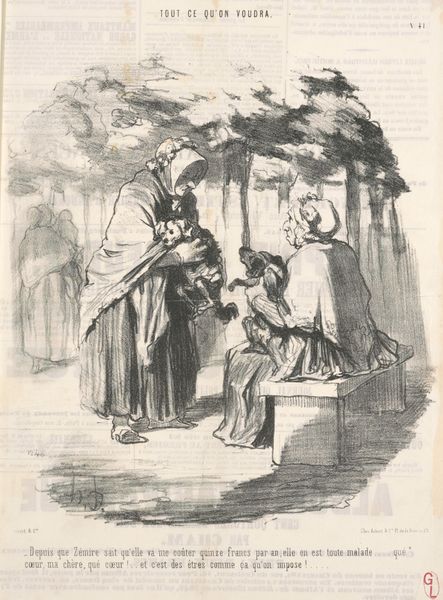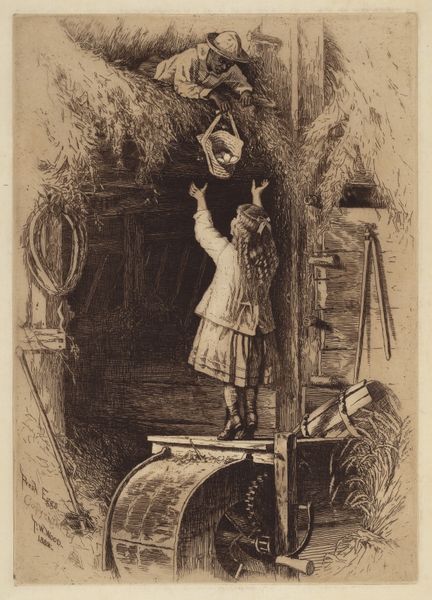
Interieur met een jongen staande op een ladder om voor een vrouw een object uit het plafond te halen 1836 - 1912
0:00
0:00
drawing, pen
#
portrait
#
drawing
#
figuration
#
child
#
pen
#
genre-painting
#
academic-art
#
realism
Dimensions: height 147 mm, width 107 mm
Copyright: Rijks Museum: Open Domain
Curator: Isaac Weissenbruch created this intriguing interior scene. It's a pen drawing titled "Interieur met een jongen staande op een ladder om voor een vrouw een object uit het plafond te halen," dating from 1836-1912, currently held at the Rijksmuseum. Editor: It feels…claustrophobic, yet domestic. The strong vertical created by the ladder and the reaching figures leads my eye upward, but the low ceiling weighs it down again. There's a sense of being trapped within this interior space. Curator: Let's analyze the visual composition. The artist employs meticulous pen strokes, achieving remarkable tonal variations. Notice the cross-hatching used to render depth, creating a tangible sense of volume, while the sharp contrast effectively captures the lighting within the interior. Weissenbruch masterfully articulates space. Editor: I’m also seeing gender roles played out within these architectural constraints. The woman's dependence on the boy for this simple task reads as commentary on domesticity. Her posture—reaching, yet grounded—hints at the limitations placed upon her. He climbs literally and perhaps metaphorically. Curator: A valid point, but let's examine how the meticulous rendering of everyday objects enhances the scene’s authenticity, characteristic of realist art. Look closely at the details - the textures of the curtains, the precision of the furniture, and even the rendering of the clothing folds; all enhance the painting's depth, reinforcing a sense of corporeal tangibility. Editor: And that’s exactly what the artwork’s function serves, doesn't it? Replicating reality through a male gaze and solidifying a specific perception of 19th-century home life, class, and assigned roles? It's far more than just artistic style. Curator: Agreed. Its narrative certainly resonates with period expectations of societal roles, but I remain deeply captivated by the artist’s technical prowess; this mastery elevates a mere scene into a highly resolved observation of texture, lighting, and form. Editor: For me, Weissenbruch’s image provides fertile ground for exploring the construction of gendered spaces, family labor, and limited opportunities during that era. Curator: It seems we both arrive at seeing different yet compelling elements captured so thoughtfully within this single image. Editor: Yes. Art becomes far more dynamic once seen through multiple lenses.
Comments
No comments
Be the first to comment and join the conversation on the ultimate creative platform.
